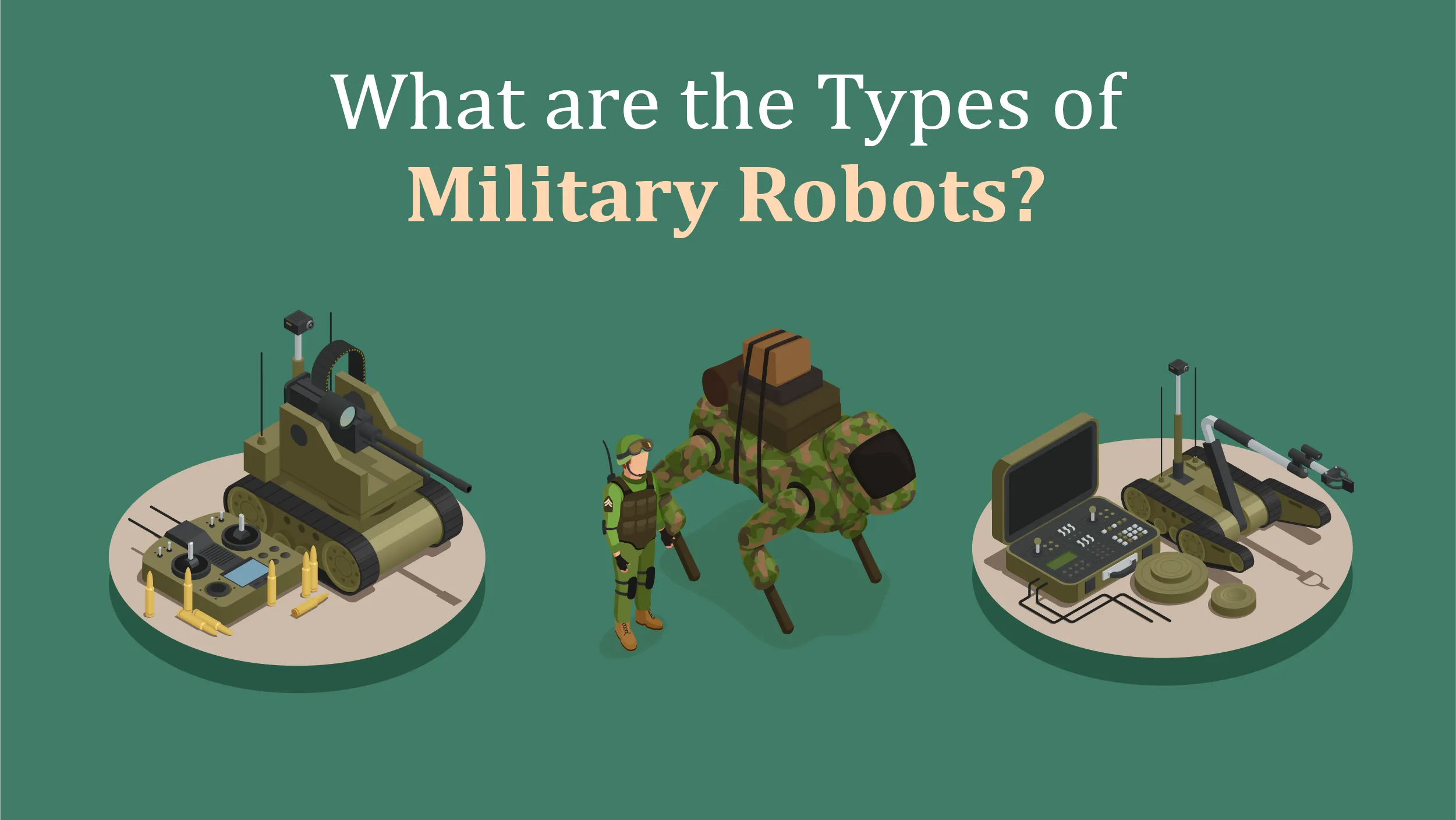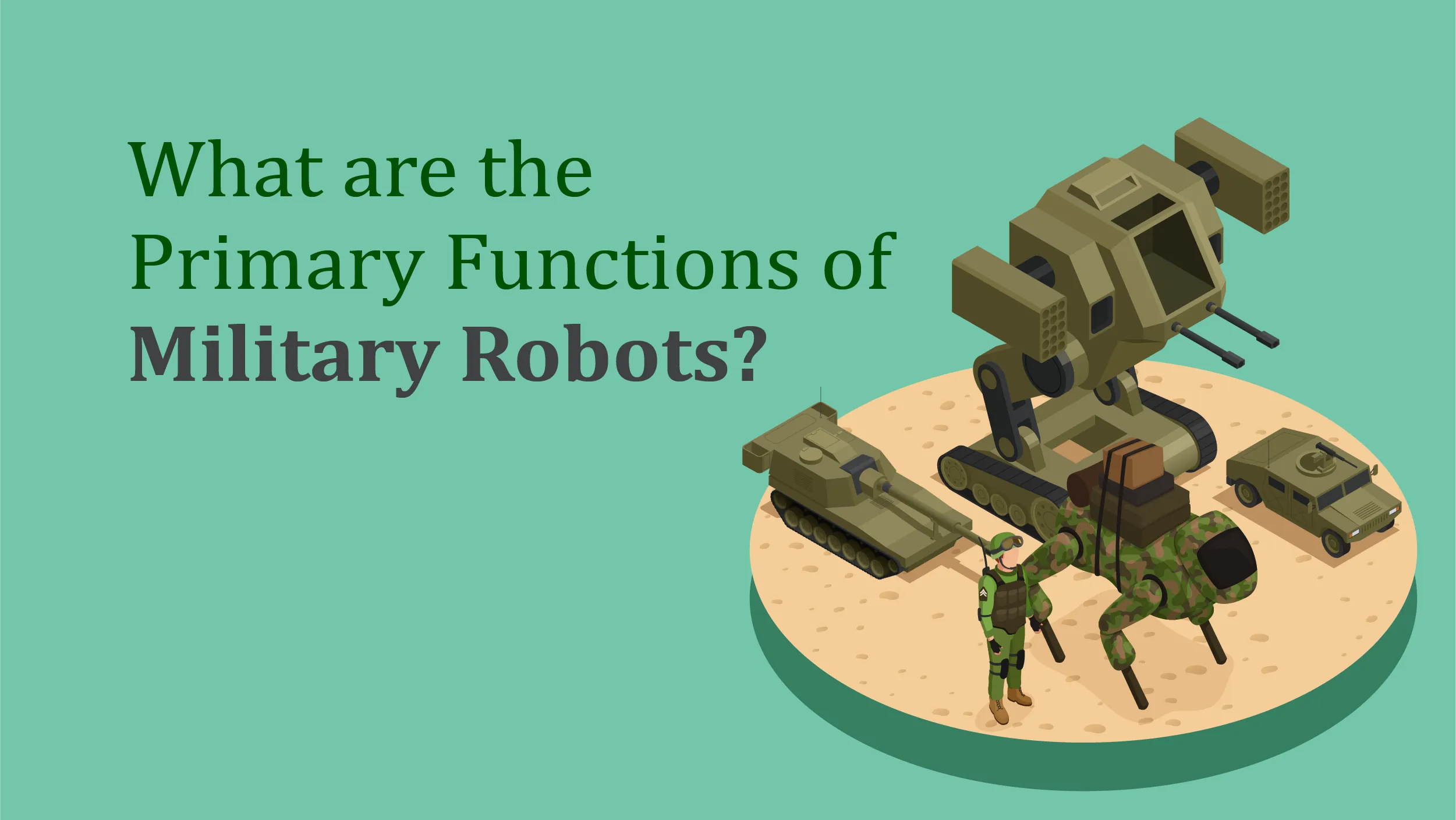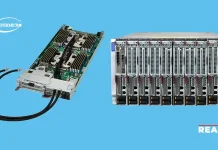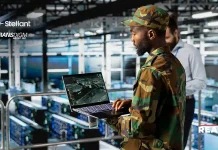The world is evolving and expanding at a rapid scale. New technological innovations and their applications are revolutionizing the world with one aspect at a time. Big enterprises, governments, small and medium businesses, and even individuals are embracing technology in their daily lives to improve their quality of life. Robots are one of the technological innovations that have gained a significant amount of popularity and are being widely used in various industries to execute multiple tasks.Despite the significant advantages, robotics is one of the most highly criticized technological innovations. Particularly its military applications have faced significant opposition from various authorities and regulatory bodies. In this blog, let us have a look at the types and functions of military robots.
What are the Types of Military Robots?

Given below are the types of robots that have applications in the military:
1. Robots for Transportation
Transportation robots are one of the most widely used types of military robots globally. It is leveraged by the military troops to move a variety of supplies such as bombs, artillery, and other resources. These robots can even find applications in human logistics. It has the capability to pick up casualties from the battlefield and migrate them to the rehabilitation center.
Transportation military robots are usually unmanned ground vehicle (UGV) robots that have wheels or legs integrated for seamless movement. The technology can be customized for use in the air or underwater as an unmanned aerial vehicle (UAV) or unmanned underwater vehicle (UUV), respectively.
2. Robots for Search and Rescue Operations
Military troops have to execute a lot of search and rescue operations. They can leverage military robots for assistance in their search and rescue missions. These robots can help find missing or captured personnel. Search and rescue robots can offer significant benefits to the military. It has the capability to reach places such as underwater, floods, difficult terrains, or wildfires, where humans can find it challenging to reach. Government authorities can even utilize these robots during disaster relief. These robots can be beneficial in rescue operations post a natural disaster, including tsunami, earthquake, or other. Even in human-caused disasters, these robots can be life-saving equipment.
3. Robots for Mine Clearance
Minefields are one of the lethal weapons used in any war. It can be challenging for the military and government bodies to clear the land mines after the war is over. Uncleared mines can have significant casualties and might kill thousands of locals even after the war is over.
Robots are unmanned ground vehicles (UGVs) that are particularly designed to identify and clear landmines; they are referred to as mine clearance robots. It has the capability to detect the exact location of the land mines and deactivate them before they create a casualty. These robots are operated by a human operator who is responsible for clearing land mines remotely.
4. Robots to Combat Fire
It is critical to combat fire during a war before it becomes disastrous. Moreover, simply relying on human firefighters can be dangerous and challenging. A firefighting robot is a military robot type that helps combat fire in war-like situations, reducing the casualty numbers.
5. Robots for Military Surveillance
A robot is any day better than a human for surveillance. Military robots used for surveillance and reconnaissance are critical technologies. It helps the military personnel monitor and spy on enemies or potential threats. These tools are beneficial in executing surveillance and investigative military tasks.
6. Robots with Arms and Ammunition
The term is self-explanatory. Robots equipped with weapons to eradicate threats in defense are armed robots. Such types of military robots are a common sight in military operations.
Also Read: Everything You Need to Know About Hypersonic Flight in 2024
What are the Primary Functions of Military Robots?

There are various military robots available that execute a variety of functions designed to improve the capabilities of armed forces. These robots have the capability to minimize human risk. Given below are a few primary functions of military robots:
1. Reconnaissance and Surveillance
These robots are equipped with sensors, cameras, and other surveillance equipment. It gathers intelligence, monitors enemy movements, and conducts surveillance in dangerous or inaccessible areas.
2. Explosive Ordnance Disposal (EOD)
Military robots are used to detect, disarm, and dispose of explosives, landmines, and improvised explosive devices (IEDs). The military troops can keep human personnel at a safe distance without having a significant risk to the personnel’s life.
3. Combat Support
A few military robots are designed for direct combat roles. They provide firepower support, engage enemy targets, and perform offensive operations. Combat support military support is autonomous or can be operated remotely.
4. Logistics and Supply
Military robots find applications in transporting supplies, ammunition, and equipment across the battlefield. These robots ensure efficient and timely resupply to troops in the field.
5. Medical Evacuation
Military medical robots are used to evacuate wounded soldiers from the battlefield. It allows the medical professional to provide immediate medical assistance. Transporting them to safety will not expose medics to danger.
6. Surveillance and Target Acquisition
The military uses drones and unmanned aerial vehicles (UAVs) for aerial surveillance. These robots also help military troops to acquire targets and guide precision strikes on enemy positions.
7. Training and Simulation
Another primary function of military robots is to offer training exercises and simulations to prepare soldiers for various combat scenarios. This strategy enhances the soldier’s readiness and effectiveness.
8. Cyber Warfare
A few military robots might be involved in cyber operations, including network defense, offensive cyber operations, and electronic warfare.
9. Communication and Signal Intelligence
Robots can also act as mobile communication relays. Military robots enhance communication capabilities in the field and intercept enemy communications.
10. Chemical, Biological, Radiological, and Nuclear (CBRN) Defense
Military troops can deploy robots to detect, analyze, and mitigate CBRN threats, protecting personnel from hazardous materials.
Wrapping up Military Robots
Military robots help improve operational efficiency. It has the capabilities to improve situational awareness and minimize risk to human soldiers in a wide range of military operations. Government bodies need to examine the threat and deploy the right military robots to keep their soldiers and civilians safe from various threats.




